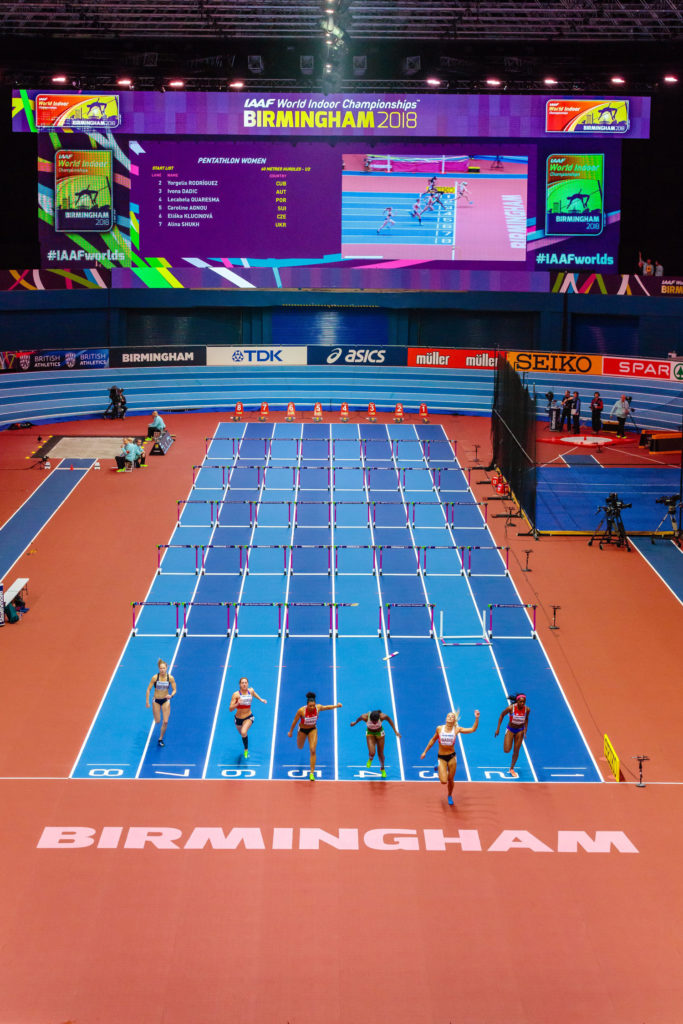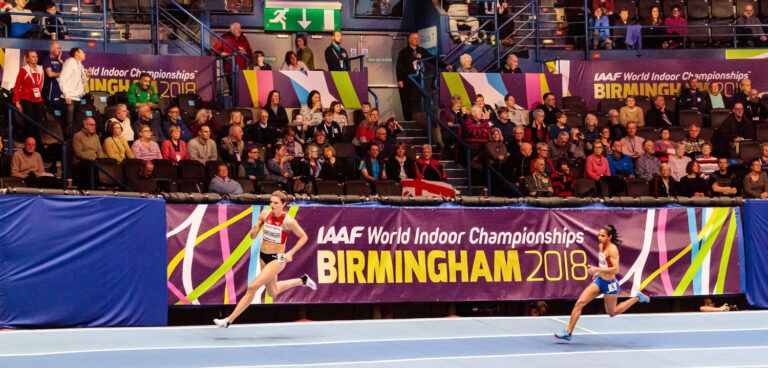The Arena Birmingham in the UK, which plays host to the IAAF World Indoor Championships, has published the results of the world’s first biomechanics research study on athletic performance, which was conducted at the venue using high-speed camera technology.
During the 2018 IAAF event, researchers at Leeds Beckett University installed 28 high speed cameras to record the performances of 161 athletes across 13 events in forensic detail. Following 12 months of analysis the results have been revealed.
It was the first project to capture in three dimensions the mechanics of the sprint start for the 60m sprinters and hurdlers during a world class competition, and also gave researchers insight into the measurements of the sprinters’ exit time from the starting blocks, plus advanced analysis of the men’s high jump by dissecting the performance into 31 different biomechanical variables.
“We have again deployed three-dimensional motion techniques to analyze key events, building upon what we learned in London 2017,” said lead researcher Dr Athanassios Bissas, head of biomechanics at the Carnegie School of Sport, Leeds Beckett University.
“We have refined these techniques and the data captured illustrates what we can learn when science is applied. It is fascinating and remarkable at the same time. We believe our findings will again excite the athletics community.”
IAAF President Sebastian Coe commented on the study:
“These biomechanics studies have given us all a fresh and fascinating insight into the extraordinary performances of our athletes, and reflect the IAAF’s drive toward innovation and technology that can help us to showcase athletics in new and exciting ways for all our followers. I’m sure coaches the world over will be examining these reports closely for knowledge they can use to enhance their training programs and develop their athletes.”






